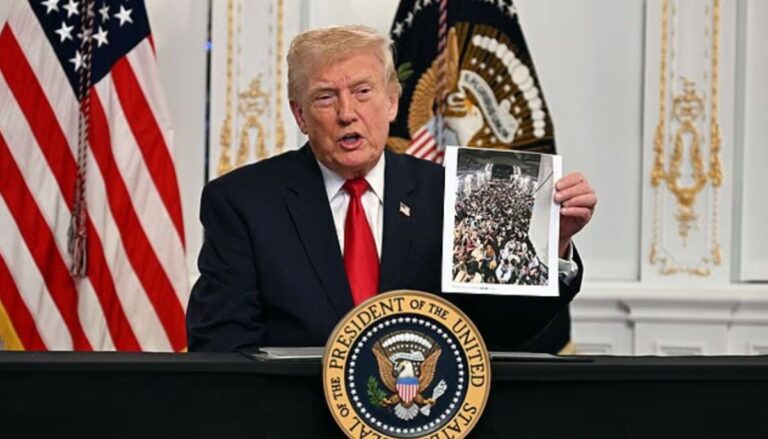
#Custodial #standards #crypto #assets #Political #Economy
He said that the federal government’s announcement about the Pakistan Crypto Council is an important step in the regulation of digital assets in the country. Formally established under the direction of Prime Minister Shehbaz Sharif, the council is tasked with developing a regulatory and operational framework that integrates cryptocurrencies into the formal financial system to reduce the risk of misuse.
A parliamentary briefing revealed that the government neither seeks to promote nor discourage cryptocurrency. The aim is simply to bring it into a lawful, structured process to ensure transparency, protect consumers and prevent illicit flows. The move reflects a recognition that crypto-assets have reached a level of economic relevance that demands formal oversight.
The council, overseen by an expert aide to the prime minister, signals Pakistan’s willingness to adapt to the rapidly digitizing global economy and align its fiscal governance with international standards. The policy change comes at a time when major financial jurisdictions are tightening their supervisory regimes for virtual assets.
The United States, through the coordinated efforts of the New York Department of Financial Services, the Securities and Exchange Commission, and the Office of the Comptroller of the Currency, has issued detailed guidance to consolidate custody safeguards, disclosure obligations, and the permissible scope of crypto-related banking activities. These developments are not isolated. They are part of a global push toward defining clearer accountability in the digital asset ecosystem.
The US approach, based on consumer protection and systemic risk management, offers a regulatory model that countries like Pakistan can closely examine to design their own frameworks. In September 2025, NYDFS updated its guidance on virtual currency custody structures, establishing clear standards for how financial institutions should segregate, record and manage customer assets. The guidance emphasizes that beneficial ownership of digital assets should always remain with the customer, even in the case of insurance.
Licensed entities are now required to maintain separate accounting systems for customer assets, ensuring that digital holdings never mix with the entity’s corporate funds. Furthermore, custodians may not deploy customer assets for proprietary use, such as syndicated loans or internal liquidity operations. These safeguards are designed to prevent the form and loss of user funds seen in several high-profile crypto collapses in recent years.
A notable addition to the NYDFS update concerns the regulation of subcustodians, third-party entities engaged by primary custodians to hold consumer assets. Institutions must now conduct due diligence on such sub-custodians, provide detailed documentation to the NYDFs and obtain prior approval for material changes to their custody structure.
The sub-custodians themselves must either be licensed by the NYDFs or subject to a regulatory regime deemed to be substantially equivalent. This framework creates a chain of accountability designed to eliminate opacity in asset handling and reinforce trust in custodial services, which are fundamental to institutional participation in digital finance.
In parallel, the SEC’s Division of Investment Management issued a no-action letter clarifying that state-chartered trust companies may qualify as “qualified custodians” under the Investment Advisers Act, 1940, and the Investment Company Act of 1940, provided they meet certain conditions. These include state authorization for digital asset custody, comprehensive internal controls to protect private keys and cybersecurity, and full disclosure of risks associated with clients. The position expands the scope to include regulated entities in the custody of digital assets, while ensuring that investor protection remains a central priority.
Statements issued jointly by the NYDFs and the SEC demonstrate an evolving regulatory framework in the United States, reflecting efforts to reconcile financial innovation with fiduciary duty obligations. Further reinforcing this trend, the NYDFs issued guidance urging banks to incorporate blockchain analytics into their compliance and risk management systems.
By using blockchain analytics tools to track and monitor virtual currency transactions, institutions can identify suspicious activity, assess counterparty risk and verify sources of funds. This approach is consistent with broader anti-money laundering (AML) and countering the financing of terrorism (CFT) objectives, which remain key areas of global concern. The message from US regulators is clear that responsible innovation in digital assets must be based on transparency, accountability and technological rigor.
The federal banking agencies’ clarification of bank-permissible crypto-asset activities complements these measures. Banks wishing to engage in crypto-related services, such as custody, stablecoin issuance or tokenized deposit operations, are required to obtain supervisory non-objection prior to launching. This ensures that institutions have robust risk management and compliance procedures in place before participating in digital asset markets.
The framework indicates that while the US is not hostile to crypto innovation, it will only proceed under well-defined professional standards. This pragmatic approach marks a shift away from formal uncertainty towards aligning financial sustainability with digital innovation.
Similar trends are emerging globally. The European Union’s Markets in Crypto Assets (MICA) Regulation establishes a harmonized framework across member states, mandating licensing requirements, capital adequacy standards and consumer disclosures for all crypto service providers.
The UK’s Financial Conduct Authority has also tightened its oversight, demanding compliance with financial development rules and increasing due diligence for crypto exchanges and supervisors. Together, these regulatory initiatives in the US, EU and UK build an international consensus around protecting consumer assets, improving transparency and allowing crypto markets to operate in parallel rather than integrating them into existing financial systems.
For Pakistan, this global momentum provides a reference and an opportunity. The formation of the Pakistan Crypto Council indicates that unregulated crypto activity poses reputational and financial risks, especially given the country’s sensitivity to the Financial Action Task Force’s compliance standards.
The Pakistan government has stated that it neither seeks to promote nor ban crypto. However, it is creating a structural framework. This suggests a shift towards a policy middle ground that balances innovation with oversight. However, the real test is in the implementation. A fragmented regulatory response, overlapping jurisdictions or lack of technical capacity can limit the Council’s effectiveness. Learning from the mature regulatory environment can help Pakistan avoid the pitfalls of ad hoc policymaking.
Three areas demand special attention from policy makers. First, consumer protection should be the cornerstone of Pakistan’s digital asset policy. Exchanges and custodians will be required to segregate client assets, maintain detailed records of holdings and undergo regular independent audits. Disclosure obligations, similar to those under NYDFs, should ensure that investors are informed of risks, custody arrangements and ownership rights. Establishing a national framework for crypto insurance or compensation funds could further boost investor confidence.
Second, it is important to reduce illicit financial flows. Although the government has stated that crypto transactions have not yet significantly penetrated Pakistan’s formal system, precautionary regulation is necessary. The use of blockchain analytics tools already being promoted in the US could be institutionalized globally in conjunction with Pakistan’s financial intelligence units to detect suspicious transactions, monitor wallet activity and combat the financing of terrorist networks. In accordance with FATF Recommendation 15, licensing Virtual Asset Services Providers (VASPS) under a risk-based supervisory model will help ensure compliance by encouraging formal market participation.
Third, Pakistan should develop a coherent institutional framework for crypto oversight. Coordination between the State Bank of Pakistan, the Securities and Exchange Commission of Pakistan and the Federal Investigation Agency is essential to avoid regulatory overlap and ensure coordinated enforcement. A dedicated crypto-regulatory sandbox, overseen jointly by these agencies under the guidance of the Crypto Council, could allow controlled experimentation with digital financial products while generating empirical data for policy design.
Pakistan’s establishment of the Crypto Council is a timely acknowledgment that the digital asset economy cannot remain unregulated. The experience of the NYDF, SEC and OCC has shown that the integrity of the financial system in the digital age depends on its ability to protect consumers, enforce transparency and manage systemic risks. For Pakistan, aligning with these global principles and aligning them with its legal and institutional capabilities can pave the way for a secure, modern and resilient crypto ecosystem.
Dr. Akramul Haq, author and Supreme Court lawyer, is an adjunct professor at Lahore University of Management Sciences.
Abdul Rauf Shakuri is a US-based corporate lawyer.






